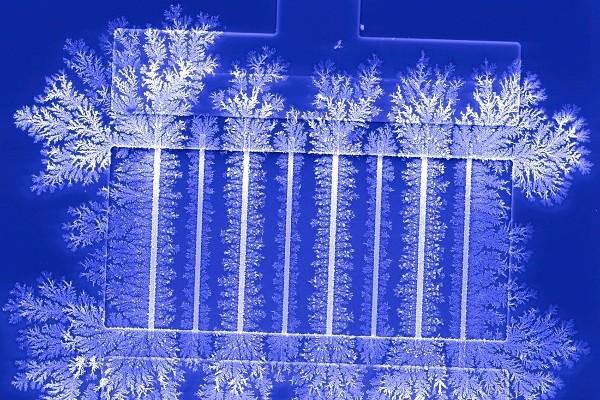
We are delighted to announce the winners of the STS Elionix Scientific Image Competition for Q3 of 2021. The STS Elionix Scientific Image Competition offers a unique opportunity for Tyndall researchers to flex their creative muscle, showcase and share scientific images from their research which they have discovered to be visually striking or informative to the technically excellent. Three winners are each awarded a €100 All-4-One voucher, kindly sponsored by STS Elionix.
The judges for the Q3 competition were Prof. William Scanlon, CEO; Prof. Eoin O'Reilly, Chief Scientist; Peter Smyth, Commercial Director; Ursula Morrish, Marketing & Communications Manager; Graeme Maxwell, Head of Specialty Products & Services; and Dr Daniela Iacopino, Researcher, MNS.
The exceptional quality and creativity demonstrated resulted in votes cast for three talented winners – Antoine Lemaire, Xing Ouyang, Han Shao.
Congratulations to all!
Current Crowding
Antoine Lemaire, III-V Materials and Devices

in the III-V Materials and Devices research group.
This image is produced from electroluminescence (EL) measurement under high injection. It highlights the current crowding effect on a mesa structure.
This has been done on a photonic GaAs-based device. The current crowding shows how much the lateral flow of carriers is affected by the device resistance. The current spreading length (Lcs) is a good figure of merit to evaluate such effect. When Lcs is much greater than the lateral length of the device (Ld), then the carriers flow is homogenously laterally distributed. However, when Lcs becomes similar or smaller, the carriers flow is crowded near the metal contact. Reducing this effect is of major importance to achieve high light extraction efficiency (LEE) in LEDs for instance.
This measurement by EL allows the extraction of the current spreading length at various current density which is of major importance to optimize a device at a specific injection level.
Stone Forest of Invisible Radio
Xing Ouyang, Photonics

in the Photonics group.
Today we are connected everywhere through invisible wireless signals. However, have you wondered why you sometimes lose your signal even if you move your smartphone a fraction of a meter?
This image is the graphic rendering of a wireless channel in 2-D space, which looks like an astonishing stone forest with sculpted pinnacle columns, a typical geographic landscape called Karst Hills. The height of the hills indicates the strength of the signal. The formation of the radio karst hills is due to the rich scattering environment without a direct line of sight from the signal tower.
This phenomenon, known as Jake’s model, explains the constructive and destructive interference due to the scattered paths. If your radio antenna is in the deep, you lose signal! One effective method is to employ multiple antennas in our phone so there is always an antenna with strong signal.
Merry Christmas
Han Shao, Nanotechnology
.jpg)
in the Nanotechnology research group.
Free chlorine is a strong oxidizing agent widely used in the treatment of drinking water, wastewater, as well as paper and food industries. However, an excess of free chlorine may cause some serious problems such as breathing difficulties, irritation, and may lead to cancer. Thereby, using a fast, cheap and sensitive testing method is crucial to monitor the free chlorine in drinking water.
This image shows a thin layer of Ag nano structure deposited on platinum electrode using electroplating method. The fibers of the nano structure grew in all directions while connected with each other like winter tree branches. This enhanced the surface area. The allows the Ag nano structure to be used to detect free chlorine in water. With the help of a large surface area, the level of sensitivity is improved.
